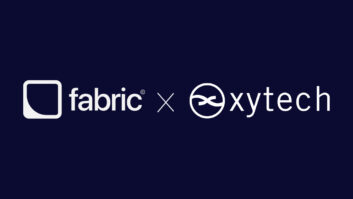Looking back at 2018, it seems one theme has really dominated TVBEurope’s news coverage: mergers and acquisitions.
Obviously the battle for control of Sky has been a huge story, as has The Walt Disney Company’s acquisition of 21st Century Fox’s entertainment assets – and we expect that story to continue into 2019 as the acquisition nears completion.
But away from what’s happening with the broadcasters (and there are still question marks over the likes of UKTV), it’s the technology side of the industry that has seen major change over the last 12 months.
One of the biggest stories of the year was Grass Valley’s $94 million acquisition of Snell Advanced Media in February; we’ve also seen Pixel Power acquired by Rohde & Schwarz and RCF Audio buy DPA Microphones – and that’s just in the past few weeks!
The big question of course is will all this activity, particularly in the vendor market, continue into 2019? According to Josh Stinehour from Devoncroft Partners, it’s difficult to state any expectation for the coming 12 months with any confidence. “However, the reasons for engaging in M&A – for both buyers and sellers – are the same in 2019 as in 2018 for media technology vendors. This would suggest a similar level of activity,” he explains.
“At the same time, the current macro environment remains accommodative for deals given elevated stock valuations and low historic debt levels – though this could change.”
Devoncroft has tracked M&A activity in the media technology sector for over a decade. Stinehour says that by the standard of number of deals, 2018 was not materially different than the annual activity level of the past five years (although it might not have felt like that at the time).
“All things being equal, higher stock prices supports more M&A activity since an acquirer’s stock can serve as a currency, and higher stock prices also make acquisition targets relatively less expensive,” he explains. “While stock prices are a factor, I would argue there are stronger drivers of activity specific to the dynamics of the media technology sector. One factor impeding deal activity is a relative imbalance between buyers (fewer) and sellers (many, many more).”
According to Stinehour, perhaps the lesson of merger and acquisition activity in 2018 is a reminder of how it is a rationale (even effective) business decision in response to an individual company’s circumstances.
He cites Pixel Power as a business where the owners had run the company for 30 years prior to this year’s sale to Rohde & Schwarz: “Setting aside business justifications, the owners of Pixel Power were going to need to eventually transition the business to new management. On the other side of the transaction, Rohde & Schwarz appears to have made a classic build versus buy decision in acquiring Pixel Power. By buying into the graphics market Rohde & Schwarz gains an established product set and customer base in an accelerated time frame when compared to building internally.”
Does Stinehour expect to see acquisitions continue within the major broadcaster market? “We have seen almost unimaginable consolidation among broadcasters (especially in the US),” he says. “It is difficult to see how even greater levels of consolidation could occur, but I’ve said that before!”
Finally, what does he expect to see happen within our industry in 2019? “Drawing on the historical record, I expect more of the same: targeted M&A (buy versus build, geographic expansion, etc); creative mergers to add economic scale; pragmatic divestitures by larger technology organisations; and lastly a few totally surprising purchases by large IT organisations based on utterly arbitrary rationales.”







